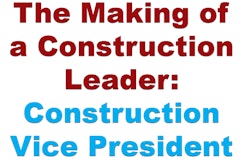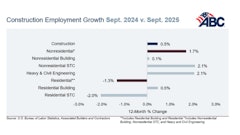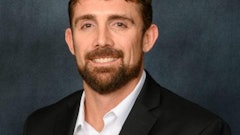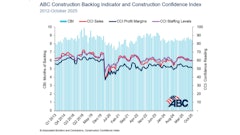
The impact felt when an employee leaves is exacerbated when labor markets are tight. Leaders at all levels in the organization need to be cognizant of the message their actions send to employees when someone leaves.
“Leaders are always being watched. How the leadership reacts when someone leaves is going to impact how everyone else reacts,” says Marissa Levin, co-founder of Successful Culture International, and a culture and leadership expert.
“If they are transparent, honest, and don’t act like the sky is falling, they acknowledge the loss, but pivot quickly into fill that gap, employees will take that cue, and things will go on without a glitch.” she says.
If you feel that workers today don’t have the same loyalty to employers that previous generations did, you are correct. “Younger generations definitely have less tolerance for being unhappy,” says Levin. “They are just not going to stay in a job if it’s not fulfilling a purpose that they believe in.”
So, what can employers in construction do to attract and keep employees on the job in this market? Levin offers five key strategies.
1. PAY ATTENTION TO EXIT INTERVIEWS
When people leave an organization, it’s critical to find out why. According to the 2018 Retention Report from the Work Institute the top three reasons employees leave are:
- Career Development – No opportunity to grow in a preferred job and career.
- Work-Life Balance – Better work-life balance, which includes more favorable schedules, shorter commute times and scheduling flexibility.
- Manager Behavior – Unprofessional or unsupportive managers. Exit interviews can be a useful tool in identifying the reasons why employees are leaving, provided they ask the right questions.
“The goal of the exit interview should be to find out where the company did well or fell short on communication or meeting expectations,” says Levin. While exit interviews can be a useful tool, it’s about more than just collecting data. Companies need to analyze and share the information and then follow up with action.
Levin cautions that exiting employees might not be comfortable providing answers. “If you haven’t already developed a culture of trust, when an employee leaves they are not all of sudden going to divulge everything to you,” she says.
2. EXAMINE YOUR MISSION, VALUES AND VISION
“Problems such as high attrition, low trust, low morale, and low engagement are all a result of a compromised culture,” says Levin. Companies that start to deviate from their mission, vision, and values struggle. She recommends that businesses re-engineer their hiring processes to ensure that new hires have the technical competence and are culturally aligned with the company’s core values before they begin. “Interviewing is the key piece to ensure that you have strong retention of great people,” says Levin.
PCL Construction, ranked #98 on FORTUNE magazine’s Best Places to Work, and #7 on Engineering News-Record’s Top 400 list of general contractors, uses behavioral aptitude tests such as the Predictive Index to help gain a clear understanding of the motivating needs and behaviors of potential team members. “We use a two-pronged approach to seek out interest and if the potential candidate seems like a good fit, the next steps would include an in-person interview,” says Dianna Hemphill-O’Byrne, communications specialist for PCL.
3. BE PROCESS-CENTRIC, NOT HERO-CENTRIC
The more your processes are documented and employees are trained on those processes, the less risk there is to the organization when a key person leaves. Employees can then easily step in and fill the void. “When a company revolves around a handful of heroes, it can be demoralizing for the people who are not one of those heroes,” says Levin.
4. CHECK IN WITH EMPLOYEES AT ALL LEVELS
It’s important to know what’s happening throughout all levels of the company. “If you’re only talking with other C-level executives, you can be blinded,” says Levin. She views companies as puzzles. “When one puzzle piece is missing, the puzzle is still incomplete,” says Levin. “Everybody matters and everyone sees the company from their own perspective.” Leaders need to understand what motivates everyone in the organization.
5. LOSE THE HIERARCHY
Levin believes that the idea of coming in and paying your dues before you speak up is an antiquated view. “From the day they start on the job you should give employees an opportunity to be valuable,” says Levin. “Creating cultures of mentorship rather than a strict hierarchy is really important,” she says. Encourage communication and collaboration.
At employee-owned PCL Construction, all salaried employees are eligible to become shareholders and more than 90 percent choose the option. “Employee-ownership is consistently ranked as a top differentiator for us among our competitors,” says Hemphill-O’Byrne. Employee-ownership provides a sense of belonging and an understanding that people at all levels contribute to success. According to FORTUNE magazine, dividends for long-term employees often exceed their annual salaries.
Virtual Workforce Solutions Summit
The Association of Equipment Manufacturers, the team that produces CONEXPO-CON-AGG, is hosting a virtual workforce solutions summit targeted to c-suite and human resources professionals in the manufacturing industry. The 3-day virtual event will feature two 45-minute sessions per day delivering education and ideas on workforce solutions. While Marissa Levin won’t be part of the line-up, each day one topic will be of interest to c-suite participants and one topic will focus on HR. Participants will have the opportunity to discuss the challenges and solutions for retaining and growing the equipment manufacturing industry’s workforce and ideas to build a pipeline of qualified talent for future growth.
To register or to learn more about this event (including scheduled speakers), please visit https://www.aem.org/events/conferences-and-seminars/workforce-solutions-virtual-summit/



















